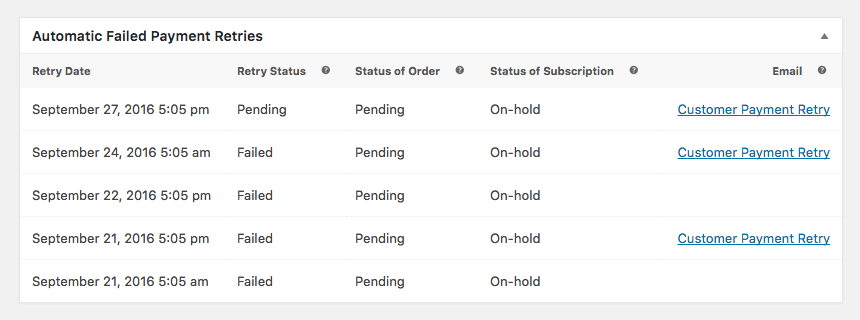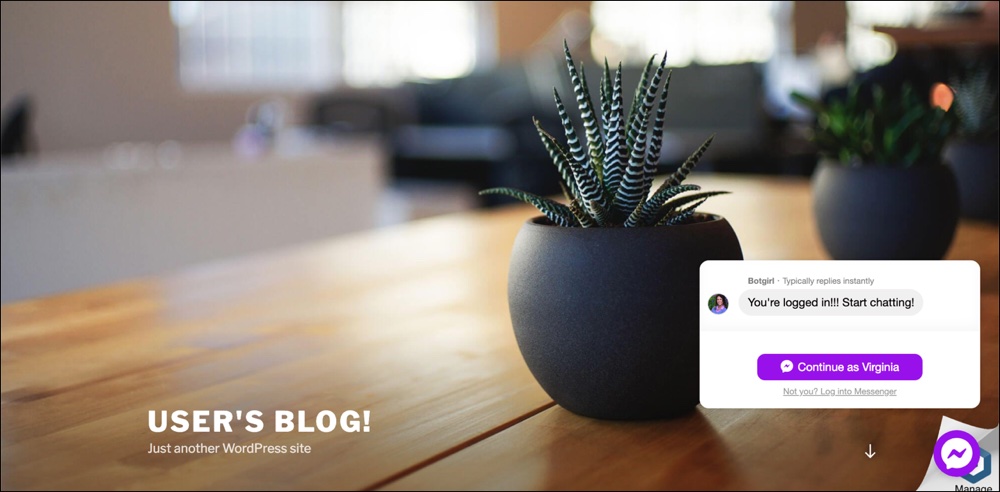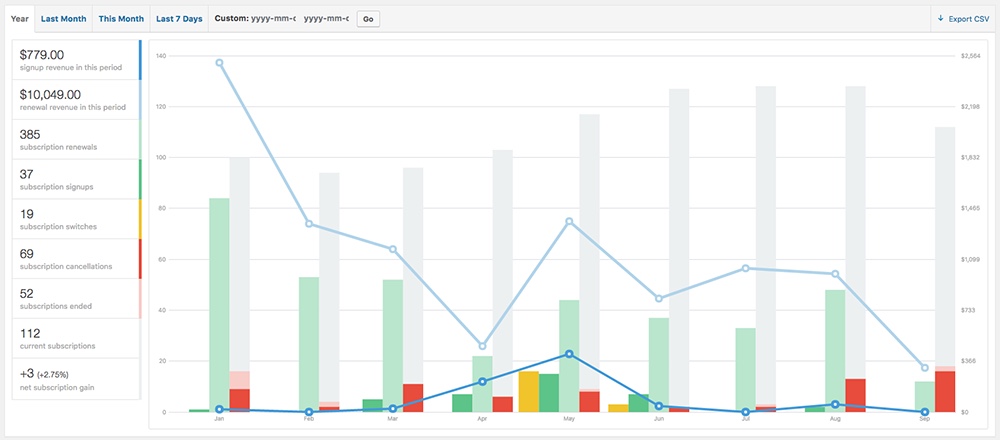5 Pitfalls of WooCommerce Subscription Sites

Subscription-based websites are on the rise, thanks to the ever-enticing perspective of passive income. Thankfully, WordPress and WooCommerce make it easy to set up a paid subscription site.
However, you can’t let the ball drop once the site is set up.
WooCommerce subscription sites have some unique challenges in terms of customer support, development changes, and reporting. Whether you have an existing subscription business, or you’re contemplating building one, be ready to tackle these 5 common pitfalls.

Just a quick note, for the purposes of this guide, we’ll be referencing the WooCommerce Subscriptions plugin in examples. However these pitfalls do apply to most subscription or membership based sites.
1. Renewal Processing Headaches
Creating a user-friendly renewal process is one of the keys to success for any subscription-based model. When building the site, your choice of WooCommerce payment processor and how you configure renewal payments will impact the renewal process for customers.
A common mistake on WooCommerce subscription sites is to utilize PayPal Standard as the payment gateway. Since PayPal Standard is free with WooCommerce subscriptions, store owners tend to select it by default, but there’s actually several limitations with this payment gateway for a subscription site.
For instance, with PayPal standard, the site administrator is not able to adjust the recurring billing date nor modify the recurring totals in the subscription. This is relevant because most subscription sites offer different tiers or packages. PayPal Standard doesn’t allow users to switch between subscription packages in terms of upgrading or downgrading. These limitations can then lead to problems when managing customer renewal dates and payments.

Another factor to watch for is the WooCommerce subscription settings for failed transactions. With a recurring payment structure, you can expect to have some transaction failures each month due to customer’s expired or changed credit card information. If you have the WooCommerce Subscription plugin, it will automatically retry failed subscriptions 5 times over 7 days at certain intervals. If the payments continue to fail, you’ll need to take care of it manually.
2. Providing User Support
As a subscription e-commerce site gets more subscribers, you can expect more customer questions, support requests, and user errors.
When building a new site, most site owners plan for WooCommerce costs in terms of on-going web development support and maintenance, but customer support costs are often overlooked. There can also be confusion between a business owner and the development support team in terms of which support requests require development-level attention, and which ones can be taken care of by the business’ customer support staff.
If everything is running smoothly on the site, then the majority of subscribers’ questions are simple: how to reset a password, update their billing information, or cancel a subscription. Typically, a customer support representative can handle these, but if you have a lot of customers, then the number of queries can quickly overwhelm a single site manager.

You can reduce the number of user support requests by adding an FAQ page to the website and providing intuitive messaging on how to do basic user edits on the site. If you can manage it, you can also add live chat to the site as a quick way for users to get responses. Live chat has the additional advantage of increasing conversions and sign-ups as well.
Providing poor customer service to subscribers can drastically hurt your business’ reputation and incoming revenue. Be mindful of your customer support resources as the site grows.
3. Reporting & Analytics
Reducing your churn rate is a common goal for subscription e-commerce businesses. Churn rate refers to the number of customers unsubscribing from the service or product each renewal cycle. Even with the best marketing campaigns and sign-up rates, a high churn rate spells disaster for the business in the long run.

Therefore, reporting and analytics are non-negotiable for subscription-based models. The WooCommerce Subscriptions plugin offers several upgraded reporting features. However, there are a few places where reporting discrepancies occur. One is a discrepancy between the payment gateway reports and the website reports. This isn’t very common, but if some users are given free subscriptions through an offer or coupon and no payment is made at sign-up, then you can have a discrepancy between the total number of subscribers listed on the site versus in the payment gateway reports.
Additionally, discrepancies can occur with tracking refunds, as well. If a refund is processed directly through the payment gateway, the website may or may not be simultaneously updated, resulting in reporting inconsistencies.
For any WooCommerce site, setting up e-commerce tracking within Google Analytics is an essential step. Nonetheless, you may encounter a few additional challenges between your site’s reports and Google Analytics. Discrepancies can occur if a user exits your site immediately after paying and doesn’t wait for the thank you page to load. In this case, the transaction won’t be tracked and sent to Google Analytics. Disparities can also arise when a website administrator has to manually enter a subscription into the backend of the site. Refunds and test orders are also much easier to track in the website versus in Google Analytics, so you may see discrepancies arising with these situations as well.
While you may face some tedious work in comparing reports from different areas, staying on top of website reports is critical in assessing the success of the website and business.
4. Offering Discounts & Promotions
With WooCommerce Subscriptions, you have the ability to run numerous promotions using various coupons and discount setups. The challenge with offering promotions on a subscription site is not so much in the setup, but more so in the execution and management.
For e-commerce sites with products, coupon codes are a bit simpler to implement because a customer is typically making a one-time purchase with a coupon code. With a subscription model, there are more factors to consider before you unveil an exciting promotion. Are you offering a discount on just the initial sign-up fee? Or are you offering a discount on the recurring subscription cost? Does that discount on the recurring cost last indefinitely or only for a certain number of renewal periods?

The solutions are different, depending on the offering. If you’d like to offer a discount on just the initial sign-up fee, you can utilize Subscription Codes in WooCommerce Subscriptions. For a special discount on the recurring subscription payment, you’ll want to utilize a Recurring Product Discount within WooCommerce. By default, this option will create a discount for the ongoing payment amount for your subscription and the coupon will last for the duration of the subscription. If you want to limit the coupon to a certain number of months or payments, you can adjust the settings and offer a limited payment coupon within WooCommerce Subscriptions.
The second hiccup can occur in communicating the promotion to customers. If customers misunderstand what type of discount is being offered, you can expect numerous support questions, or worse, tons of refund requests. As previously mentioned, you’ll also want to watch for any reporting discrepancies between payment gateway and website reports if you’ve offered a permanent free subscription to a customer.
5. Implementing Major Site Changes
Similar to any WooCommerce site, you need to be careful when implementing large design or development changes on your WooCommerce subscription site. Any bugs or downtime can directly impact your online sales.

When making major changes to any live site, your developer or development team will often work on a production or staging site and then move those changes to the live site. With an informational site, you could overwrite the live site and launch the changes. This isn’t ideal with e-commerce sites.
You’ll have to manually move over the changes and make sure to not overwrite and mess up any incoming subscription sign-ups and transactions. Utilizing a WordPress hosting solution that offers a production area and implementing daily backups can definitely help in these scenarios.
When performing any development work on a subscription site in a production area, be careful to turn off email notifications on the production version. Most subscription sites have automatic email notifications for subscribers, and you could confuse your customers if these are suddenly sent from a development install link.
You can also avoid major disruptions to customers by testing plugin and WooCommerce updates in a production area before implementing those updates on the live site. Due to the high volume of WooCommerce extensions available, plugin incompatibility issues can surface at times. Catching any small issues before testing on a live, high-traffic site can help you avoid customers experiencing any disruptions.
Keep the Revenue Flowing
Don’t let these pitfalls cramp your style. WooCommerce subscriptions are still one of the best options for e-commerce subscription set-ups, powering many of the largest e-commerce sites.
Learning how to deal with the challenges before they cause a problem is the best way to keep your site running smoothly, support your customers and enjoy a steady stream of revenue from your subscription site.




Hi,
Completely understand your point re Paypal – which Paypal gateway with WooCommerce do I need to work with Paypal reference transactions which are the ones that can be adjusted.
Thanks,
Dale.